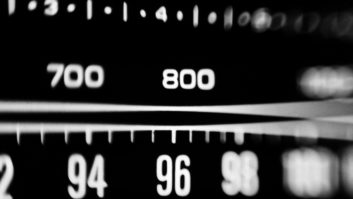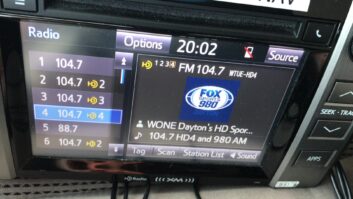Tivoli Audio Sets New Standard With Model Three Radio Sound System
After a manufacturing drought of high-quality home radios that dated back almost to the tube era, radio aficionados have in recent years had the pick of some the finest new AM/FM receivers ever built. Now there’s a new addition to the connoisseur’s collection: Tivoli Audio’s Model Three Clock Radio.
Not surprisingly, the magnificent Model Three has its roots in a concept by the late Henry Kloss, the notable audio designer who created the KLH Model Eight, the first truly outstanding FM table radio and now much-desired collectable. Take a close look at the Tivoli Model Three and you’ll see that it’s clearly an offspring of Kloss’s definitive Model Eight.
Good listening
In the years prior to his death in January of 2002, Kloss and his business partner, Tom DeVesto, left Cambridge Soundworks to form Tivoli Audio, the first product of which was the Model One table radio.
Priced at a modest $100, the Model One became an instant classic. It has a discrete component FM tuner featuring GaAs MESFET mixers, a heavy-magnet, long — throw 3 — inch speaker driver, and an ample, smooth-as-silk 5:1 ratio analog tuning knob. The radio is housed in a furniture-grade handmade wood cabinet.
The Model One’s diminutive size and deceptively simple interface often mask the fact that it’s widely considered — price no object — one of the best monaural AM/FM table radios in the world. Its bare bones, uncluttered design is pure Henry Kloss, a man who studiously avoided adding what he considered unneeded gadgetry to any product.
To appreciate the Model Three’s design fully, it helps to understand how Kloss and his successors got there.
Quirky philosophy
During a 1994 interview with Radio World, Kloss revealed that he was working on a new table radio design that would take him back to his roots. That radio would eventually become the Model One.
Kloss said his biggest design struggle had been over features. He abhorred bells and whistles that interfered with a product’s essential functionality, yet was aware that many buyers demanded them.
“There’s all the choices to be made about alarms, clocks, bands, pre-programming,” Kloss said. “Before, it was easy. You had a tuning knob, a treble and a volume knob. One of the things holding me up is uncertainty about how simple you make it and then how appealing you make it because of the features it has. I’m obviously leaning toward simplicity. But I don’t know how many people get turned off when you drop off these features.”
On the Model One, Kloss dropped virtually all the bells and whistles. It has just three knobs on the front panel. If you want pre-sets or any form of automation, this radio is not for you.
The Model Three, on the other hand, represents a nod to limited automation within the philosophy of a purist. It’s a bit like when Leica, the most conservative camera company in the world, finally added an internal light meter to its basic, but revered, “M” rangefinder. The ground shook, but ever so gently.
This orthodox design approach is a key reason the Model Three adds up to such a unique and fascinating radio, one that I predict will also be an instant classic. Though the mind of Henry Kloss is no longer with us, his quirky, spirited philosophy lives on in the Model Three. It’s an approach a Luddite can love.
Think analog
First, the key technology of the Model One lives on in the Model Three, even though the new model has stereo reception capability with the addition of an optional companion speaker. Kloss’s tuner with GaAs MESFET mixers and 5:1 ratio analog tuning dial are retained. But the new radio adds a wider range of inputs and outputs on the rear panel, and – because it’s a clock radio – there’s a 20-minute sleep timer, a snooze button, optional wake — up modes and an innovative mechanical thumbwheel to set the alarm wake — up time.
Forget glowing digital readouts, this is a clock radio for those who think analog. To the left of the big tuning knob is an elegant analog clock with a quartz mechanical movement. The clock face is illuminated by a cool blue light. It’s powered by a single AA battery. Dimensions of the radio’s wooden case are 4.5 inches high x 8.375 wide x 5.25 deep. It weighs 4.25 lbs.
The clock’s outer rim is a movable ring. As you turn it, an arm on the clock face follows as you adjust it to your preferred wake-up time. Once set, push a small button under the clock to activate the alarm function, which allows wake-up to AM, FM or tone. A large snooze button on the top of the radio allows a five-minute temporary reprieve from the alarm.
I set up a Model Three system in my bedroom. By system, I mean the radio with two of its optional features, the companion stereo speaker and subwoofer. I placed the radio on one side of the bed and the stereo speaker on the opposite side. I placed the subwoofer on a shelf below the radio. Though the radio has internal AM and FM antennas, I attached a Terk FM Pro antenna to the radio’s external FM antenna connector for improved reception.
At first I tried just the radio, without the accessory components. As a standalone radio, the Model Three’s superior off-air reception and excellent sound quality ranks close to its premium competitors. The receiver, just as with its companion Model One, handled New York City’s congested RF jungle with ease. AM and FM reception was excellent, even on stations that are normally difficult to receive with cheap radio receivers. Tuning is a pleasure, requiring only the gentle twist of the big silky knob until a tiny yellow LED achieves maximum brightness.
For those desiring station presets, this is not your radio. Perhaps you’d be better off with the new Boston Acoustics Receptor, another first — rate table radio with comparable reception capability that features pre — sets.
Finally, I hooked the Model Three’s components together. In this three-piece configuration, the results were breathtaking. The system’s sound quality excels, leaving all of the new generation of premium radios we’ve tested in the dust. With Tivoli’s accessory stereo speaker and subwoofer, the Model Three creates a cocoon-like field of sound that’s ideal for small listening areas like bedrooms or workspaces.
Off the top
I had one minor issue. The Model Three radio’s internal speaker fires from the top, to make room for the clock, while the companion stereo speaker fires from the front of the cabinet. Depending on how the listener is positioned, this can cause a slight imbalance in sound levels between the two devices. It’s adjustable with the balance control on the back of the radio, but one wonders why Tivoli Audio didn’t design the companion speaker to fire from the top as well.
Obviously, when the pieces are put together, the Model Three expands to more than a small radio. It becomes a high-quality component sound system in miniature, one that exceeds for low — to medium — volume listening in compact spaces. Tivoli also offers an accessory CD player, but we didn’t audition it. A Sony portable CD player plugged into the Model Three’s auxiliary input sounded just fine, however.
Tivoli Audio’s Model Three advances the premium radio genre while maintaining the classic design characteristics advocated by Henry Kloss. Some might want more automated features like station presets; but for those who savor great sound with Kloss’s penchant for simplicity and minimalism, the Model Three radio system simply can’t be beat.
The radio retails for $199.95. A basic companion stereo speaker is $49.99, while a companion stereo speaker with second clock/alarm unit is $99.95. The subwoofer is priced at $79.99. An optional remote-controlled CD player is $199.95.
Tivoli also offers the Model Two AM/FM radio (minus clock/alarm capability) with companion stereo speaker for $159.99.
For information, visit the company Web site at www.tivoliaudio.com











